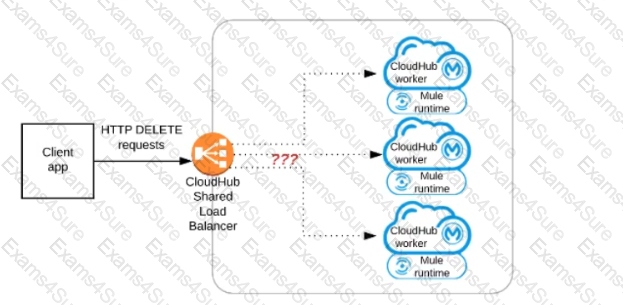MuleSoft Certified Integration Architect - Level 1
Last Update 5 days ago
Total Questions : 244
MuleSoft Certified Integration Architect - Level 1 is stable now with all latest exam questions are added 5 days ago. Incorporating MCIA-Level-1 practice exam questions into your study plan is more than just a preparation strategy.
By familiarizing yourself with the MuleSoft Certified Integration Architect - Level 1 exam format, identifying knowledge gaps, applying theoretical knowledge in MuleSoft practical scenarios, you are setting yourself up for success. MCIA-Level-1 exam dumps provide a realistic preview, helping you to adapt your preparation strategy accordingly.
MCIA-Level-1 exam questions often include scenarios and problem-solving exercises that mirror real-world challenges. Working through MCIA-Level-1 dumps allows you to practice pacing yourself, ensuring that you can complete all MuleSoft Certified Integration Architect - Level 1 exam questions within the allotted time frame without sacrificing accuracy.
An organization's security policies mandate complete control of the login credentials used to log in to Anypoint Platform. What feature of Anypoint Platform should be used to meet this requirement?
An ABC Farms project team is planning to build a new API that is required to work with data from different domains across the organization.
The organization has a policy that all project teams should leverage existing investments by reusing existing APIs and related resources and documentation that other project teams have already developed and deployed.
To support reuse, where on Anypoint Platform should the project team go to discover and read existing APIs, discover related resources and documentation, and interact with mocked versions of those APIs?
An IT integration tram followed an API-led connectivity approach to implement an order-fulfillment business process. It created an order processing AP that coordinates stateful interactions with a variety of microservices that validate, create, and fulfill new product orders
Which interaction composition pattern did the integration architect who designed this order processing AP| use?
Which of the below requirements prevent the usage of Anypoint MQ in a company's network? (Choose two answers)
According to the Internet Engineering Task Force (IETF), which supporting protocol does File Transfer Protocol (FTP) use for reliable communication?
An airline is architecting an API connectivity project to integrate its flight data into an online aggregation website. The interface must allow for secure communication high-performance and asynchronous message exchange.
What are suitable interface technologies for this integration assuming that Mulesoft fully supports these technologies and that Anypoint connectors exist for these interfaces?
Which Anypoint Platform component helps integration developers discovers and share reusable APIs, connectors, and templates?
What is true about automating interactions with Anypoint Platform using tools such as Anypoint Platform REST API's, Anypoint CLI or the Mule Maven plugin?
Refer to the exhibit.

A Mule application has an HTTP Listener that accepts HTTP DELETE requests. This Mule application Is deployed to three CloudHub workers under the control of the CloudHub Shared Load Balancer.
A web client makes a sequence of requests to the Mule application's public URL.
How is this sequence of web client requests distributed among the HTTP Listeners running in the three CloudHub workers?


TESTED 20 May 2024
Hi this is Romona Kearns from Holland and I would like to tell you that I passed my exam with the use of exams4sure dumps. I got same questions in my exam that I prepared from your test engine software. I will recommend your site to all my friends for sure.
Our all material is important and it will be handy for you. If you have short time for exam so, we are sure with the use of it you will pass it easily with good marks. If you will not pass so, you could feel free to claim your refund. We will give 100% money back guarantee if our customers will not satisfy with our products.